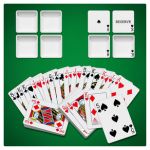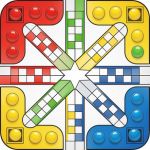Ludo

GAME INFO
Ludo is one of the most beloved and timeless board games, enjoyed by players of all ages across the globe. Rooted in history and inspired by the ancient Indian game Pachisi, Ludo has evolved into a modern classic that combines strategy, luck, and friendly competition. With its simple rules, colorful design, and engaging gameplay, Ludo is a game that brings people together, whether it’s for a casual family game night, a friendly match with friends, or an intense online competition.
The game’s charm lies in its balance of strategy and chance, as players must carefully plan their moves while relying on the roll of the dice to determine their fate. Whether you’re a seasoned player or new to the game, Ludo offers endless fun and excitement, making it a must-play for anyone who loves board games.
The Premise of Ludo
The premise of Ludo is simple yet captivating: players compete to move their tokens from their starting area to the center of the board, known as the "home" or "finish." The game is played on a square board divided into four colored sections, each representing a player’s base. The objective is to be the first player to get all four of your tokens to the center, navigating the board while avoiding being sent back to the starting area by your opponents.
The game is played with a single die, and the roll of the dice determines how far a token can move. However, Ludo is more than just a game of chance—it’s a game of strategy, as players must decide which token to move, when to take risks, and how to block or capture their opponents’ tokens. The combination of luck and strategy creates a dynamic and unpredictable gameplay experience that keeps players engaged from start to finish.
Gameplay Mechanics
Ludo is easy to learn but offers plenty of depth and excitement for players of all skill levels. Here’s a breakdown of the core gameplay mechanics:
-
The Board and Setup The Ludo board is divided into four quadrants, each marked with a distinct color (red, blue, green, and yellow). Each quadrant contains a "base" where a player’s four tokens start the game. The board also features a circular path that runs around the perimeter, with colored "home columns" leading to the center.
At the start of the game, each player selects a color and places their four tokens in their respective base. The game can be played by 2 to 4 players, and the order of play is determined by rolling the dice.
-
Rolling the Dice and Moving Tokens On their turn, each player rolls a single six-sided die to determine how many spaces they can move one of their tokens. However, a token can only leave the base and enter the board if the player rolls a 6. Once a token is on the board, it moves clockwise along the path based on the number rolled.
Rolling a 6 grants the player an additional turn, allowing them to roll again and potentially move another token or advance the same token further. This mechanic adds an element of excitement and opportunity, as players can make significant progress with consecutive rolls of 6.
-
Capturing Opponents’ Tokens One of the most thrilling aspects of Ludo is the ability to capture your opponents’ tokens. If a player’s token lands on a space occupied by an opponent’s token, the opponent’s token is sent back to their base and must start over. This creates opportunities for strategic play, as players can target their opponents’ tokens to slow their progress and gain an advantage.
However, certain spaces on the board are marked as "safe zones," where tokens cannot be captured. These safe zones add an extra layer of strategy, as players can use them to protect their tokens from being sent back.
-
Reaching the Home Column Once a token completes a full circuit of the board, it enters the "home column" of its respective color. Tokens in the home column move toward the center of the board, but they can only advance with an exact roll of the dice. For example, if a token is three spaces away from the center, the player must roll a 3 to move it into the home.
The first player to get all four of their tokens into the center wins the game. However, the race to the finish is often filled with twists and turns, as players compete to block, capture, and outmaneuver each other.
-
Winning the Game The game ends when one player successfully moves all four of their tokens to the center of the board. Depending on the players’ preferences, the game can continue to determine second, third, and fourth place, or it can end immediately after the first player wins.
Strategy and Decision-Making
While Ludo is heavily influenced by the roll of the dice, strategic decision-making plays a crucial role in determining the outcome of the game. Players must carefully consider their options on each turn, deciding which token to move, when to take risks, and how to respond to their opponents’ actions. Key strategic elements include:
- Prioritizing Tokens: Players must decide whether to focus on advancing a single token or spreading their efforts across multiple tokens. Advancing one token quickly can lead to an early lead, but it also makes that token a target for opponents.
- Blocking Opponents: Players can use their tokens to block their opponents’ progress by occupying key spaces on the board. This can force opponents to take longer routes or delay their advancement.
- Using Safe Zones: Safe zones provide protection from being captured, and players can use them strategically to safeguard their tokens while planning their next move.
- Timing the Knockout: Capturing an opponent’s token can be a game-changing move, but players must weigh the risks and rewards of leaving their own tokens vulnerable in the process.
Variations and Custom Rules
One of the reasons Ludo is so popular is its flexibility and adaptability. Players can customize the game with house rules and variations to suit their preferences. Some common variations include:
- Fast Start: Allowing players to move a token out of the base with any roll, not just a 6, to speed up the game.
- Double Tokens: Allowing players to stack two tokens on the same space, which can only be captured by another stack of two tokens.
- Team Play: Players can form teams, with teammates working together to get all their tokens to the center.
These variations add variety and replayability to the game, ensuring that no two sessions are ever the same.
A Visual and Social Delight
Ludo is as visually appealing as it is fun to play. The colorful board, vibrant tokens, and simple design make it easy to understand and enjoyable for players of all ages. Whether you’re playing a physical board game or a digital version, the cheerful and engaging visuals enhance the overall experience.
The game’s social aspect is another key factor in its appeal. Ludo is a game that brings people together, encouraging friendly competition, laughter, and camaraderie. It’s perfect for family game nights, gatherings with friends, or even online matches with players from around the world.
Why Ludo Stands Out
Ludo is more than just a board game—it’s a timeless classic that has stood the test of time. Its combination of simple rules, strategic depth, and social interaction makes it a game that appeals to players of all ages and backgrounds. Whether you’re playing for fun or competing to win, Ludo offers an experience that’s both entertaining and rewarding.
The game’s adaptability and accessibility make it a favorite for casual players and serious gamers alike. With its mix of luck and strategy, every game of Ludo is a unique and exciting adventure.
Conclusion
Ludo is a game that captures the joy of competition, the thrill of strategy, and the fun of spending time with friends and family. With its vibrant design, engaging gameplay, and endless replayability, it’s no wonder that Ludo has remained a favorite for generations.
So gather your friends, roll the dice, and get ready to embark on a colorful and exciting journey with Ludo. The race to the center begins now—will you be the next Ludo champion?












